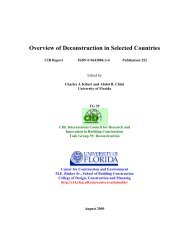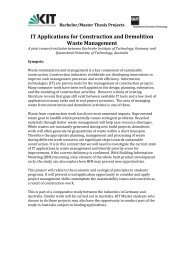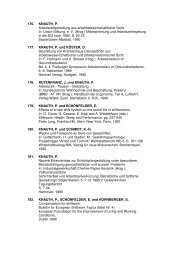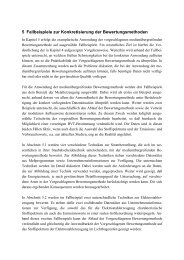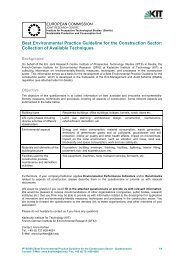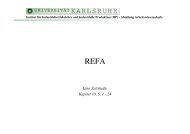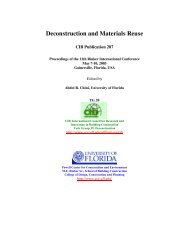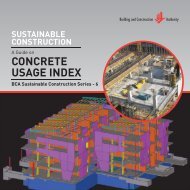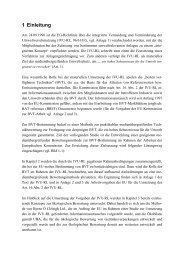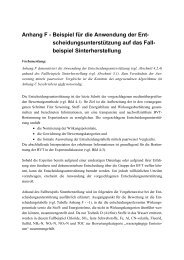Waste reduction final report -4 - Test Input
Waste reduction final report -4 - Test Input
Waste reduction final report -4 - Test Input
You also want an ePaper? Increase the reach of your titles
YUMPU automatically turns print PDFs into web optimized ePapers that Google loves.
Standard that is now a requirement for all new larger buildings in the city. It is based on<br />
similar criteria to LEED and also addresses waste issues. In the housing sector a version of<br />
LEED for Homes has been adopted but has so far had limited impact. Other housing ratings<br />
such as R2000 and Energy Star focus more on operational energy use.<br />
In recent years the Living Building Challenge has attracted considerable attention, although<br />
so far a very small numbers of buildings have achieved the standard. This is an attempt to<br />
define an environmentally neutral building, and includes criteria such as net zero energy and<br />
water. One of the requirements is for 80% to 100% diversion rates for all waste depending on<br />
the material.<br />
4. Guidance documents/ <strong>report</strong>s linked to construction waste <strong>reduction</strong><br />
There are several sources of information and resource materials available for reducing CRD<br />
waste in Canada. Additional information is often drawn from the US. Much of this is in the<br />
form of guidance documents, case studies, best practices models, and model specifications<br />
and contracts. Considerable work is being done to increase awareness of the CRD waste<br />
issue, but the extent of progress being made is, at present, unclear.<br />
• Reducing Construction <strong>Waste</strong> in the Ontario Residential Construction Industry,<br />
Teresa Janine Paul, Habitat Associates with the Ontario Home Builders’ Association,<br />
1997<br />
http://www3.gov.ab.ca/env/waste/aow/crd/publications/OHBA-<br />
Sustainability_In_Practice.pdf<br />
• Let’s Climb Another Molehill - An Examination of Construction, Demolition and<br />
Renovation (CRD) <strong>Waste</strong> Diversion in Canada and Associated Greenhouse Gas<br />
Emission Impacts, The Recycling Council of Ontario (RCO), 2005<br />
www.rco.on.ca/What-We-Do/Projects/Detail/?bo=WhatWeDo&id=23<br />
• CaGBC, LEED Canada NC 2009 Green Building Rating System, Canada Green<br />
Building Council, Ottawa, 2009.<br />
www.cagbc.com<br />
• Ontario’s 60% <strong>Waste</strong> Diversion Goal- A Discussion Paper, Ontario Ministry of the<br />
Environment, 2004<br />
www.ene.gov.on.ca/envision/land/wda/bluebox/60percent.htm<br />
• Old to New – Design guide for salvaged materials in new construction, Paul Kernan,<br />
published by the Greater Vancouver Regional District, Vancouver, 2002.<br />
www.gvrd.bc.ca/buildsmart/<br />
• The Design for Reuse Primer was recently published in North America focussing on<br />
how to design with salvaged components.<br />
http://www.designforreuse.org/Design_for_Reuse/default.htm<br />
• A Best Practices Guide To Solid <strong>Waste</strong> Reduction: A guide document providing an<br />
overview of federal, provincial and municipal waste guidelines and the CCA’s <strong>Waste</strong><br />
Management Code of Practice. CCA 81 – 2001, Canada Construction Association,<br />
2001<br />
www.cca-acc.com/documents/ccalist_e.asp<br />
17



